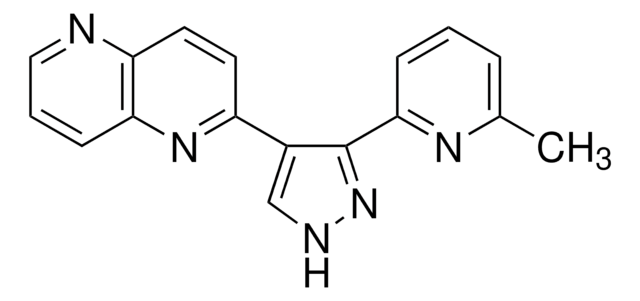SRP6169
IL-1β human
recombinant, expressed in HEK 293 cells, ≥95% (SDS-PAGE)
Sign Into View Organizational & Contract Pricing
All Photos(1)
Synonym(s):
Catabolin, Endogenous pyrogen (EP), Leukocyte endogenous mediator (LEM), Lymphocyte-activating factor (LAF), Mononuclear cell factor (MCF)
Recommended Products
biological source
human
recombinant
expressed in HEK 293 cells
Assay
≥95% (SDS-PAGE)
form
lyophilized
mol wt
(18 and 25 kDa, monomer, glycosylated)
packaging
pkg of 10 μg
technique(s)
cell culture | mammalian: suitable
NCBI accession no.
shipped in
dry ice
storage temp.
−70°C
Gene Information
human ... IL1B(3553)
General description
Interleukin-1β (IL1B) is produced by activated macrophages. It is synthesized as pro-IL-1β which is changed to active form IL-1β with the help of pro-inflammatory protease caspase-1. IL-1β belongs to the IL-1 gene family. It is a proinflammatory cytokine. The gene is mapped to human chromosome 2q14. In comparison with the Escherichia coli expressed protein, IL-1β is 50% more potent in promoting human CD4+ T cell differentiation into Th17 (T helper) cells. This cytokine is produced in a serum free, chemically defined media.
Application
- IL-1β (IL1B) has been used to check the expression of NGAL (neutrophil gelatinase-associated lipocalin) in epithelial cells after stimulation with proinflammatory cytokines.
- It has been used to check anti-inflammatory activities of N-Acetylglucosamine in human chondrocytes.
- It has been used to create inflammatory endothelium in human coronary artery endothelial cells.
Biochem/physiol Actions
IL-1β (IL1B) stimulates thymocyte proliferation by inducing IL-2 release, B-cell maturation and proliferation and fibroblast growth factor activity. IL-1β proteins are involved in the inflammatory response, being identified as endogenous pyrogens, and are reported to stimulate the release of prostaglandin and collagenase from synovial cells. IL-1β is present in chronic inflamed tissues and also in tissues going for fibrogenesis. It brings neutrophil and macrophage to the site of infection. Mutations in IL-1β gene are linked with renal manifestations and renal sequelae in Henoch-Schönlein purpura. It is also associated with destruction of β-cell in type 1 diabetes.
Physical form
Lyophilized from a PBS solution.
Preparation Note
Centrifuge the vial prior to opening.
Reconstitution
Reconstitute in sterile PBS containing 0.1% endotoxin-free recombinant human serum albumin.
WGK
WGK 3
Flash Point(F)
Not applicable
Flash Point(C)
Not applicable
Regulatory Information
常规特殊物品
Certificates of Analysis (COA)
Search for Certificates of Analysis (COA) by entering the products Lot/Batch Number. Lot and Batch Numbers can be found on a product’s label following the words ‘Lot’ or ‘Batch’.
Already Own This Product?
Find documentation for the products that you have recently purchased in the Document Library.
Neutrophil gelatinase-associated lipocalin is up-regulated in human epithelial cells by IL-1 beta, but not by TNF-alpha.
Cowland JB
Journal of Immunology, 171, 6630-6639 (2003)
Proinflammatory cytokines detectable in synovial fluids from patients with temporomandibular disorders.
Takahashi T
Oral Surgery, Oral Medicine, Oral Pathology, Oral Radiology, and Endodontics, 85, 135-141 (1998)
Virus infection activates IL-1 beta and IL-18 production in human macrophages by a caspase-1-dependent pathway.
Pirhonen J
Journal of Immunology, 162, 7322-7329 (1999)
Differential regulation of monocyte matrix metalloproteinase and TIMP-1 production by TNF-alpha, granulocyte-macrophage CSF, and IL-1 beta through prostaglandin-dependent and -independent mechanisms.
Zhang Y
Journal of Immunology, 161, 3071-3076 (1998)
Xiao Liu et al.
Arthritis & rheumatology (Hoboken, N.J.), 66(9), 2391-2402 (2014-05-20)
To examine the impact of the gp130 cytokine family on murine articular cartilage and to explore a potential regulatory role of suppressor of cytokine signaling 3 (SOCS-3) in murine chondrocytes. In wild-type (WT) mouse chondrocytes, baseline receptor expression levels and
Our team of scientists has experience in all areas of research including Life Science, Material Science, Chemical Synthesis, Chromatography, Analytical and many others.
Contact Technical Service
